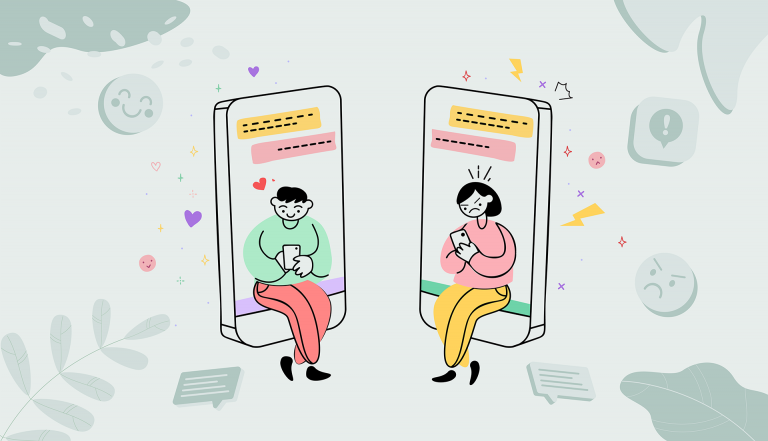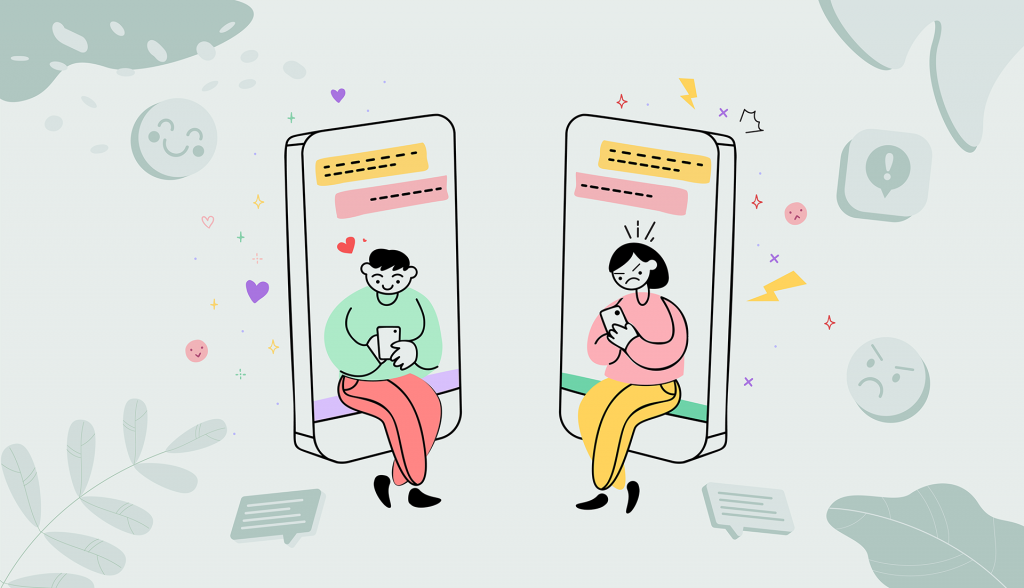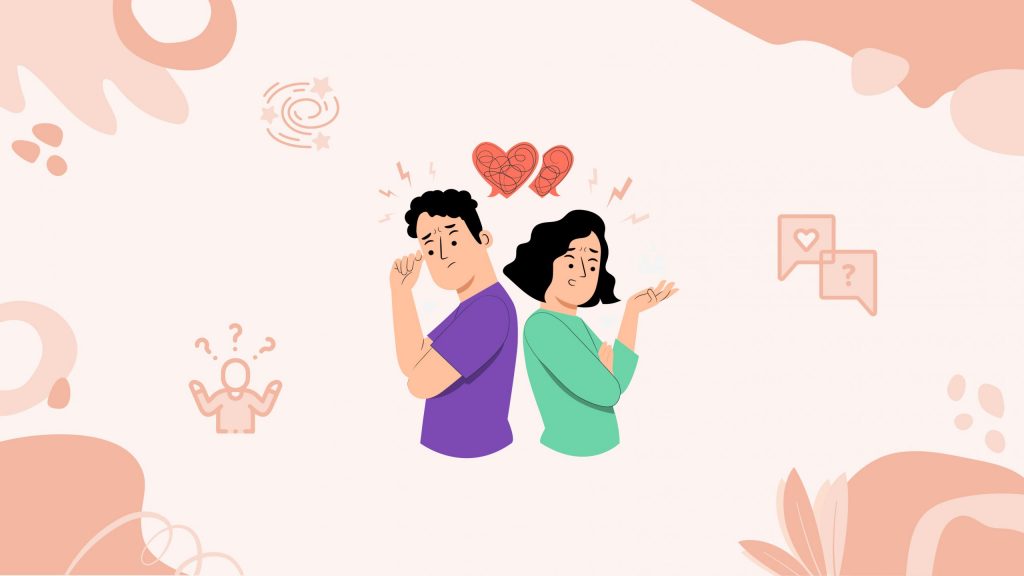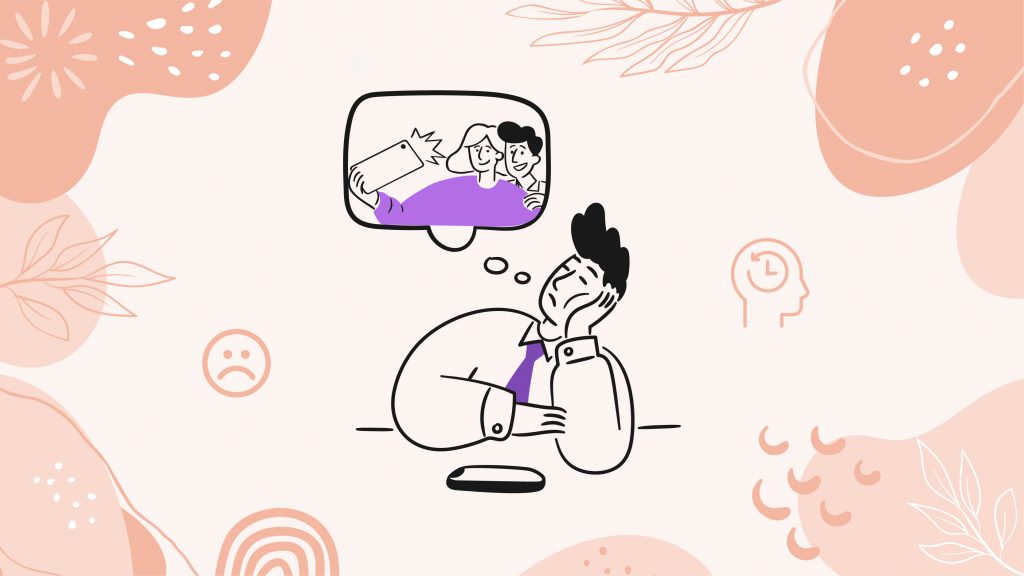When Words Become Walls
Welcome to the digital age, where texting reigns supreme, especially in the tricky terrain of dating and relationships. Texting has become our go-to for keeping the spark alive and staying connected. But let’s be real—it’s not all heart emojis and flirty gifs. The simplicity of shooting off a message hides a tricky underbelly; each text is a tightrope walk over a canyon of potential misunderstandings and misinterpretations.
Ever found yourself agonizing over the right words, pondering the perfect timing for your reply, or fretting about striking just the right tone? You’re not alone. It’s a common battlefield, figuring out how to text just right. Whether it’s the nail-biting wait for a reply or the high-wire act of squeezing genuine emotions into a quick message, texting in relationships is often like navigating a minefield. One wrong emoji or a misplaced word, and boom—things get awkward or misconstrued.
So, as we swipe and type our way through the ups and downs of digital love, it’s clear that mastering the art of texting is more crucial than ever. It’s about threading that needle between saying too little and saying too much, all while hoping our intended message doesn’t get lost in digital translation.
Understanding the Science of Our Digital Dilemmas
Ever wonder why texting can sometimes feel like you’re trying to crack a code rather than having a simple chat with a friend? The answer is deeply rooted in the neurology of human communication. When we talk face-to-face, we don’t just hear words; we see facial expressions, we hear tones of voice, and we interpret all sorts of subtle body language. These non-verbal cues are like the background music of a movie—they set the mood and deepen the meaning of the words themselves.
However, when we switch to texting, it’s like turning off the soundtrack and dimming the lights. We’re left with raw script—just plain text on a screen. Without the rich context provided by non-verbal cues, every message becomes a potential puzzle. Our brains, built to digest a rich stew of signals, must now make do with a thin broth. This sudden drop in information can be disorienting; our neurons fire in search of clues, and the absence of immediate feedback can lead to a cascade of anxiety and uncertainty.
This is because our brains are wired for clarity and connection. Neuroscientists find that human brains are inherently social; our neurons light up in complex patterns that are heavily influenced by the responses of others. When these responses are reduced to text, the brain searches harder and longer for emotional and social cues, often leading to overanalysis and stress.
Furthermore, the process of waiting for a reply in texting can stimulate the brain’s reward centers. Dopamine, a neurotransmitter linked to pleasure and reward, plays a crucial role here. Each time we receive a text, it can trigger a small release of dopamine, giving us a little emotional ‘high’. This anticipation of the reward makes the act of texting addictive, pushing us to constantly check our phones. This dopamine-driven feedback loop can heighten emotional responses and attach significant weight to interactions that might otherwise be casual and light.
Understanding this intricate dance of neurotransmitters and social cues can help us navigate our digital conversations more mindfully. Recognizing that behind every text is a brain dealing with similar challenges can foster more patience and empathy, smoothing out the digital communication landscape.
Strategies for How To Not Be A Dry Texter
So, how do we overcome these challenges and use texting as an effective tool for love and connection rather than misunderstanding? Here are a few strategies:
- Timing is Everything: Understand that everyone has a different pace for communication. Communicate your texting preferences and inquire about theirs to set a mutual understanding of expected response times.
- Keep it Light: Save deeper or more serious conversations for face-to-face interactions when possible. Texting is best used for keeping in touch and light banter rather than heavy discussions.
- Digital Detox: Occasionally, take a step back from texting and digital communication. This helps reduce dependence on digital affirmations and fosters healthier in-person connections.
- Clarify and Contextualize: Don’t shy away from being a little more descriptive about your feelings or reactions which can often be misinterpreted in text. Phrases like “I’m joking” or “I mean this sincerely” can guide the reader to your true intentions.
- Use Visual Aids: Emojis, GIFs, and memes can help inject tone and emotion into your texts. They can serve as modern-day replacements for facial expressions or gestures, reducing ambiguity.
- Echo Real Conversations: Try to mirror the natural flow of face-to-face conversations where possible. This means sometimes leaving things informal or open-ended, which can feel more genuine and less structured.
- Set Expectations Early: Be upfront about your texting habits and encourage others to share theirs. Understanding whether someone prefers short responses or enjoys lengthy text exchanges can set a comfortable pace for both parties.
- Regular Check-ins: If a conversation is important, follow up with a phone call or a video chat. Sometimes hearing each other’s voices or seeing facial expressions can clear up misunderstandings that texts alone could not.
- Take Breaks: If you find yourself anxious about texting or waiting for replies, give yourself permission to step away. This helps disrupt the dopamine loop and restores your emotional balance.
Subscribe to newsletter
Get your Gut Health Starter Guide right now.
Elevate your Tuesdays with practical, science-backed wisdom propelling you forward on your gut health journey.

Connected, Not Tangled
Tom, a 29-year-old graphic designer, vividly remembers the strain that texting once put on his relationship with Emma, his girlfriend of two years. The couple found themselves frequently tangled in misunderstandings stemming from digital communications. “Every time Emma didn’t reply quickly, I’d spiral, thinking something was wrong,” Tom recalls. It was during a particularly silent day, full of unchecked messages and growing anxieties, that Tom realized something had to change.
Deciding to confront the issue directly, Tom and Emma sat down one evening to discuss how their texting habits were affecting their relationship. They shared their personal texting do’s and don’ts and realized they had vastly different perspectives. Emma viewed texting as a low-priority communication form, used for quick updates or fun exchanges, not for handling serious matters or conveying complex emotions. Tom, on the other hand, had been treating every text as a critical piece of conversation.
“After our talk, we set some ground rules. We agreed not to sweat the small stuff like immediate replies or perfect punctuation. More importantly, we decided to save the weightier topics for our face-to-face interactions,” Tom explains. This straightforward strategy removed a huge weight off both their shoulders. “It was like a switch flipped. Our conversations became lighter and more playful, and I wasn’t glued to my phone anymore, waiting for Emma’s reply.”
The change was profound. “It completely transformed our relationship,” Tom says with a smile. “We use texts now to share funny moments from our day or to make plans. For everything else, we wait until we’re together. It’s made all the difference.”
Tom’s experience highlights a crucial lesson about modern relationships: Communication isn’t just about talking or texting—it’s about understanding each other’s communication style and adapting. By realigning their texting habits, Tom and Emma were able to strengthen their bond and enjoy their digital exchanges without the unnecessary stress that once clouded their interactions.


















